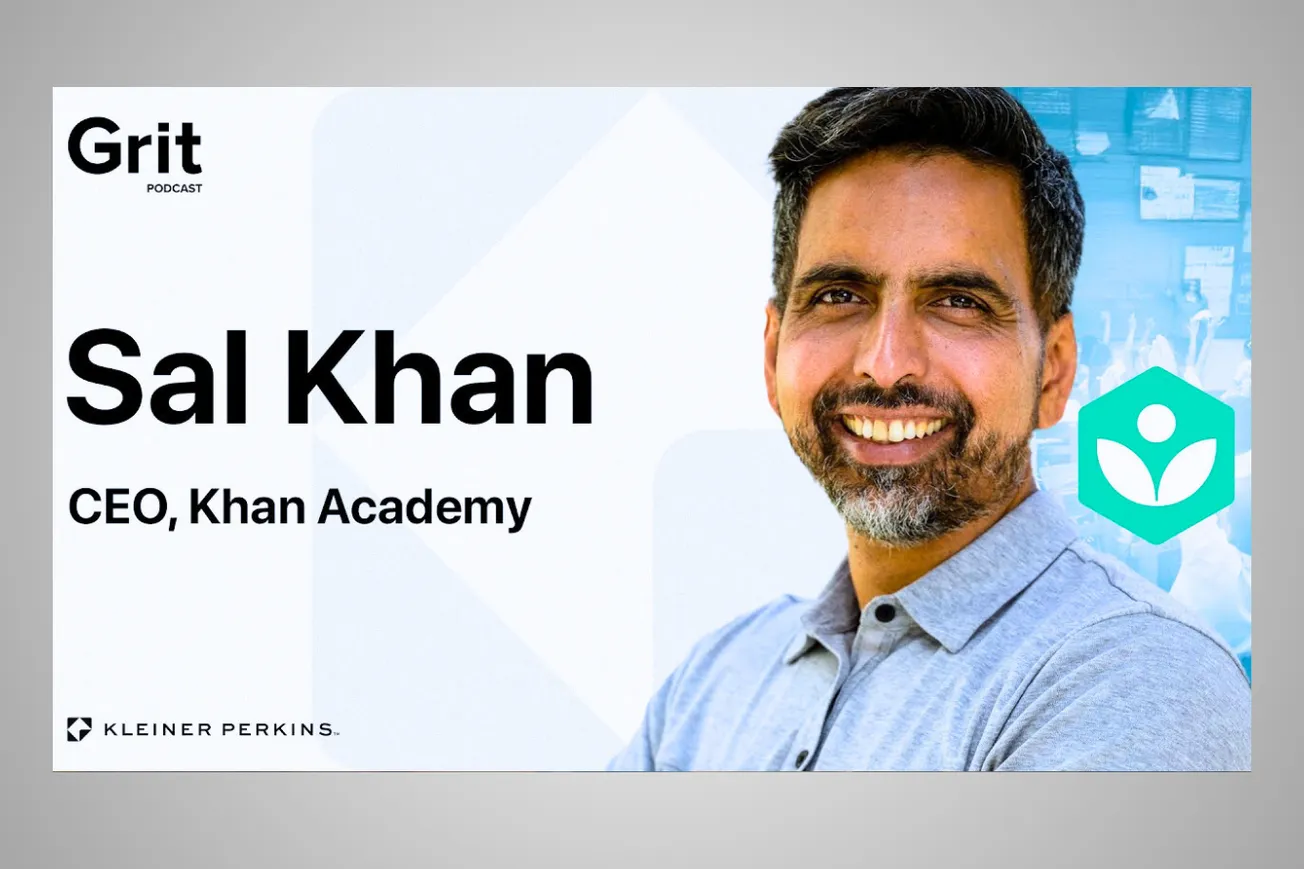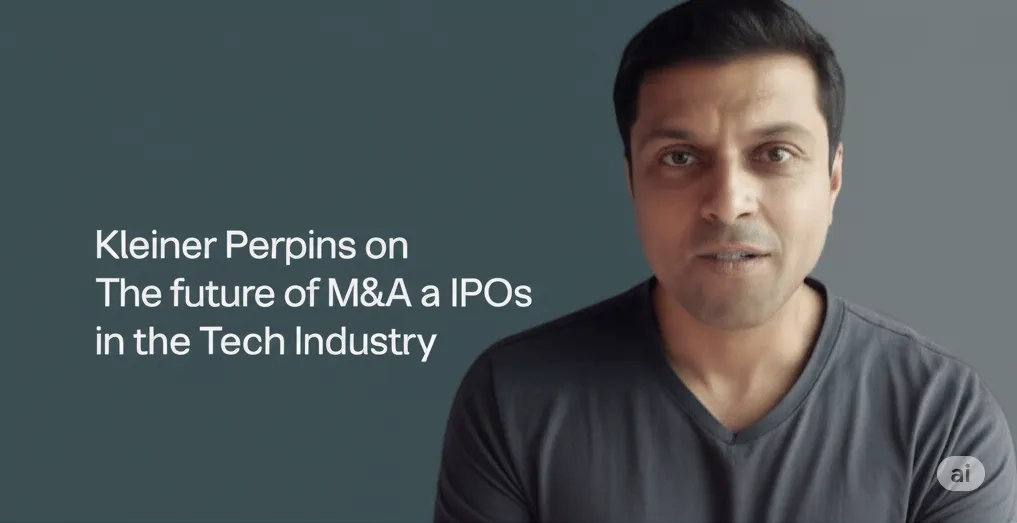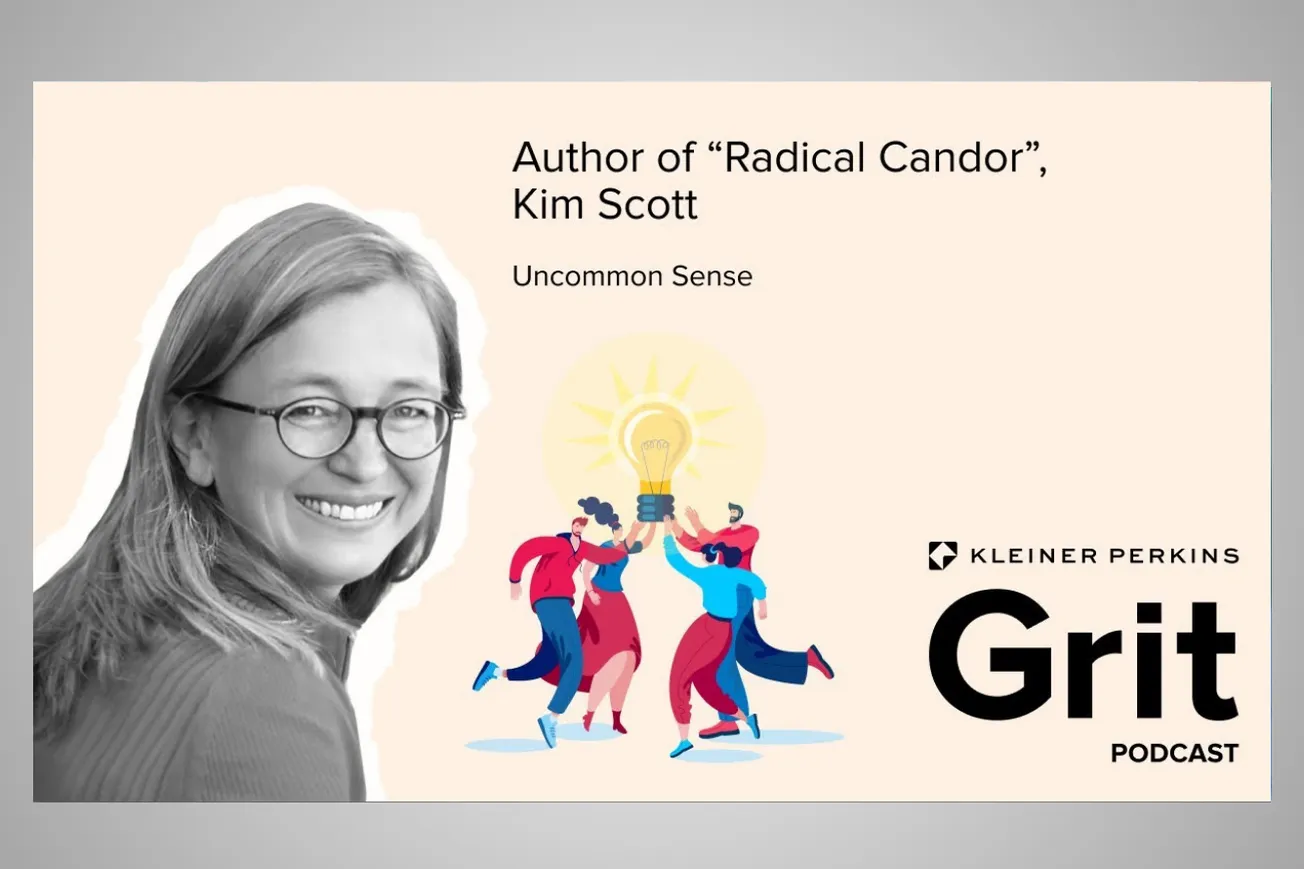Table of Contents
The integration of artificial intelligence into educational delivery represents one of the most significant paradigm shifts in learning methodology since the introduction of standardized curricula. Sal Khan's leadership of Khan Academy through this transformation provides a compelling case study in how established educational institutions can embrace technological disruption while maintaining core pedagogical values and accessibility commitments.
Key Takeaways
- Proactive Self-Disruption Strategy: Rather than waiting for external forces to drive change, Khan Academy actively seeks to "disrupt ourselves," positioning the organization to lead rather than react to technological evolution in education.
- Mission-Consistent Innovation: Their integration of AI technology maintains unwavering commitment to "free world-class education for anyone anywhere," demonstrating how organizations can embrace innovation without compromising core values.
- Evidence-Based Implementation: The focus on addressing the empirically-documented "two-sigma problem" through AI-enabled personalized tutoring reflects a rigorous, research-informed approach to educational technology adoption.
- Sustainable Non-Profit Model: Their development of earned revenue streams while maintaining free core services provides a framework for educational organizations seeking financial sustainability without compromising accessibility.
- Global Equity Focus: The vision of Khan Academy as a "global education safety net" demonstrates how technology can address systemic educational inequities at scale.
- Quality-First Technology Integration: Their careful attention to AI tutor tone, interaction design, and pedagogical effectiveness prioritizes learning outcomes over technological novelty.
- Entrepreneurial Resilience in Mission-Driven Work: Khan's journey illustrates the emotional fortitude required for educational innovation, particularly when pursuing social impact over conventional financial success.
Timeline Overview
- 00:07 - 05:27 - John and Ann Doer: Discover how venture capitalists John and Ann Doer became crucial early supporters of Khan Academy, providing both financial and emotional validation.
- 05:27 - 08:14 - Khan Academy's origins: Learn about the humble beginnings of Khan Academy, starting with Sal Khan tutoring his cousins and evolving into a global educational platform.
- 08:14 - 14:00 - What it is now: Understand Khan Academy's current scope and ambitious mission to be a "global education safety net," providing free, world-class learning to anyone, anywhere.
- 14:00 - 17:15 - Emotional fortitude: Explore the personal challenges and immense emotional resilience required to build a non-profit like Khan Academy from the ground up.
- 17:15 - 22:03 - Generating revenue: Delve into Khan Academy's nuanced approach to revenue generation, balancing its non-profit mission with the need for sustainable funding.
- 22:03 - 24:10 - The two-sigma "problem": Grasp the historical educational challenge identified by Benjamin Bloom and how personalized tutoring could significantly shift student outcomes.
- 24:10 - 27:58 - OpenAI and Sam Altman: Hear about Khan Academy's early, mind-blowing encounter with OpenAI's GPT-4 and the immediate recognition of its potential for education.
- 27:58 - 31:36 - What AI can do: Understand the practical applications and transformative capabilities AI brings to personalized learning, from Socratic tutoring to interactive historical engagement.
- 31:36 - 34:06 - Cheating and other fears: Learn about the proactive measures and considerations taken to address potential negative impacts of AI, such as cheating, in educational settings.
- 34:06 - 38:59 - Video production: Get insights into how Khan Academy's foundational video content creation has evolved and how AI might influence future production.
- 38:59 - 43:49 - Standardized tests: Discuss the implications of AI on standardized testing and how it might impact assessment and preparation strategies.
- 43:49 - 45:52 - AI tutors' tone: Explore the important considerations around developing the appropriate tone and interaction style for AI-powered tutors to maximize learning efficacy.
- 45:52 - 49:17 - Not leaving the closet: A lighthearted reference to Sal Khan's enduring dedication, still working from the same closet where Khan Academy began.
- 49:17 - 52:21 - Who Khan Academy is hiring: Discover the types of talent Khan Academy is seeking to fulfill its mission in the age of AI, emphasizing agility and innovation.
- 52:21 - End - What "grit" means to Sal: Conclude with Sal Khan's personal definition of "grit" and its importance in overcoming challenges and achieving long-term goals.
John and Ann Doer
In 2004, Sal Khan began tutoring his cousins, which eventually led to him making videos in 2006. By 2008, he had quit his hedge fund job to establish Khan Academy as a non-profit. The early days were incredibly stressful, living off savings in a walk-in closet in Mountain View, with a new child and a wife finishing her fellowship. This period of "delusional optimism" was put to the test.
A pivotal moment arrived in April or May 2010 when Ann Doerr made a $10,000 donation. Khan was initially unaware of her full significance until a lunch meeting where he shared his ambitious vision to "educate the world" in "every language and write software and teacher tools." Ann's subsequent $100,000 wire transfer was not just financial relief, but a profound "show of belief" that validated his endeavor. This endorsement from figures like John and Ann Doerr, who are "essentially family" to Khan now, provided the crucial confidence needed to persist, transforming a deeply personal project into a globally recognized institution.
Khan Academy’s origins
Sal Khan's entry into the educational sphere was not a preordained career path. Initially, after the NASDAQ collapse of the late 1990s, he had explicitly decided against entrepreneurship, citing a perceived lack of "emotional fortitude." Consequently, he pursued a more secure trajectory in finance, commencing his career as an analyst at a niche, entrepreneurial hedge fund.
However, a personal initiative—tutoring his cousins to maintain familial connection across distances—unexpectedly unveiled a venture with considerable scalable potential. Khan observed that "software scales, video scale," which prompted his reflection: "if it worked for his family, 'why couldn't it work for everyone?'" This burgeoning passion, despite the comfort and security of his established financial career, ultimately precipitated his departure from the hedge fund. He recognized that the nascent Khan Academy was the true source of his professional "energy," signaling a definitive shift in his vocational calling.
What it is now
Today, Khan Academy defines itself as a non-profit with a mission: "free world-class education for anyone anywhere." It operates as a website and mobile application, offering learning resources for all ages, from quick concept refreshers to comprehensive, structured courses in subjects like calculus, physics, and American History. It functions both inside and outside the classroom, providing teacher tools and adaptive learning paths.
At a higher level, Khan envisions Khan Academy as a "global education safety net." This means providing a "lifeline" for students in remote areas like rural Alaska, or for a "young girl in Taliban controlled Afghanistan" who might otherwise lack access to subjects like calculus. Even for students in well-resourced schools, Khan Academy aims to "raise the ceiling," enabling teachers to offer more personalization and ensuring students are "never lost or bored." His long-term aspiration, once considered "delusional," is for Khan Academy to become a "multi-generational, maybe hundreds of year institution." The decision to remain a non-profit, despite the Silicon Valley impulse for venture capital, was driven by the desire to maintain "positive energy from making it accessible to everyone" without the pressures of a premium model, ensuring its social mission endures.
Khan Academy's impact is significant: used by 6 million unique students every month, with 45 million total over the last 12 months. Users have collectively solved over 750 million problems, averaging about 2 million per day. The platform is available in more than 50 languages across over 190 countries. Despite these impressive figures, Khan sees them as merely "a proof of concept relative to the need," aspiring to reach "two billion students" annually and "meaningfully move the dial for for them." He acknowledges the competitive landscape, particularly with AI, but remains committed to Khan Academy leading the charge, ensuring that innovation prioritizes "driving equity, making it accessible to everyone or driving real pedagogy."
Emotional fortitude
Khan's candid discussion of the emotional challenges involved in building Khan Academy provides valuable insights into the psychological requirements for educational innovation leadership. The "existential stress" of leaving financial security to pursue uncertain social impact reflects the personal risks inherent in mission-driven entrepreneurship.
The social pressure Khan describes—family and friends questioning the decision to leave a well-paying job to give away educational content for free—illustrates the cultural challenges facing educational innovators in societies that prioritize individual financial success over social contribution. This pressure can be particularly intense for educational entrepreneurs from financially insecure backgrounds, where family stability and social mobility concerns create additional psychological burdens.
The validation Khan received from user testimonials—"letters from folks" expressing how Khan Academy was "really helping people"—demonstrates the importance of direct impact feedback for sustaining motivation in mission-driven work. This suggests that educational leaders pursuing innovative projects should systematically collect and celebrate evidence of positive impact to maintain psychological resilience during challenging periods.
Generating revenue
Khan Academy's evolution from a bootstrap startup to a globally recognized educational institution while maintaining its non-profit, free-access mission provides valuable insights for educational leaders seeking to build sustainable, mission-driven organizations in technology-enhanced learning environments.
The key strategic insight is that mission consistency can actually enhance rather than limit organizational sustainability. Khan Academy's commitment to free access creates significant brand value and stakeholder loyalty that enables alternative revenue streams through institutional partnerships, grants, and value-added services. This model demonstrates that social mission and financial sustainability can be mutually reinforcing when properly structured.
The "Khan Academy District" model—charging school systems for integration services while maintaining free student access—illustrates sophisticated thinking about value creation in educational markets. This approach recognizes that different stakeholders have different needs and payment capabilities, enabling revenue generation from institutions that can afford to pay while maintaining accessibility for individual learners who cannot.
The two-sigma “problem”
Benjamin Bloom's 1984 identification of the "two-sigma problem" provides the theoretical foundation for understanding AI's transformative potential in education. Bloom's research demonstrated that students receiving personalized, one-on-one tutoring with mastery-based learning achieved performance improvements of two standard deviations—effectively moving from the 50th percentile to the 96th percentile in learning outcomes.
The historical challenge was that providing every student with a personal tutor was economically and logistically impossible. Khan Academy's AI-enabled approach potentially solves this scalability problem by providing personalized tutoring capabilities to unlimited numbers of students simultaneously. This represents a fundamental shift from the industrial model of education—where one teacher serves many students with identical instruction—to a personalized model where each student receives individually tailored learning support.
For educational professionals, this transformation has profound implications. The potential to achieve two-sigma improvements in student outcomes suggests that AI-enhanced personalized learning could address many persistent challenges in educational achievement gaps, learning pace variations, and student engagement. However, realizing this potential requires careful attention to implementation quality, pedagogical soundness, and equitable access.
OpenAI and Sam Altman
Khan Academy's early access to OpenAI's GPT-4 illustrates the strategic advantages available to educational organizations that can demonstrate clear mission alignment and implementation capability to technology developers. The summer 2022 demonstration, months before ChatGPT's public release, provided Khan Academy with crucial lead time for integration planning and product development.
This partnership model suggests that educational institutions seeking to leverage emerging technologies should position themselves as valuable testing and development partners rather than simply customers. Organizations that can demonstrate serious pedagogical expertise, implementation capacity, and commitment to responsible technology use may gain preferential access to cutting-edge tools.
The immediate recognition of GPT-4's educational potential—described as interactions "almost indistinguishable" from human tutoring—demonstrates the importance of educational expertise in evaluating technology capabilities. Khan's background as both an educator and technologist enabled rapid assessment of AI's pedagogical applications, suggesting that successful educational technology adoption requires leadership that understands both domains.
What AI can do
The specific AI capabilities Khan Academy is implementing provide concrete examples of how artificial intelligence can enhance educational delivery without replacing fundamental pedagogical relationships. The ability for students to have "on-demand conversations about video lessons" and receive "Socratic nudges while working on exercises" illustrates AI's potential to provide immediate, personalized feedback and guidance.
The interactive capabilities—such as "talking to historical figures or literary characters"—demonstrate how AI can create engaging, immersive learning experiences that would be impossible in traditional instructional formats. These applications suggest that AI's greatest educational value may lie not in automating existing teaching methods but in enabling entirely new forms of learning interaction.
The integration of text-to-speech and speech-to-text functionalities addresses accessibility concerns that are crucial for equitable educational delivery. These features can support students with learning differences, language learners, and those with different learning style preferences, illustrating how AI can advance educational equity objectives.
Conclusion
Sal Khan's leadership of Khan Academy through AI integration offers a sophisticated model for educational transformation that balances innovation with institutional values, scalability with sustainability, and technological capability with pedagogical effectiveness. His approach demonstrates that educational organizations can embrace disruptive technologies while maintaining commitment to equity, accessibility, and learning quality.
The key insight from Khan Academy's model is that successful educational technology adoption requires more than technical implementation—it demands deep understanding of learning science, institutional mission, and the complex relationship between individual learning needs and systemic educational challenges.
For educational professionals, Khan Academy's approach suggests that AI adoption can enhance rather than threaten effective teaching when implemented thoughtfully and with appropriate attention to pedagogical principles and equity considerations. The challenge and opportunity lie in developing the competencies and frameworks necessary to leverage AI capabilities while maintaining the human relationships and professional judgment that define excellent education.
As the educational sector continues to evolve in response to AI capabilities, Khan Academy's model provides a roadmap for transformation that preserves essential educational values while embracing the personalization and accessibility benefits that AI can provide. This balanced approach may well define the future of educational delivery across multiple learning contexts facing similar technological transformation challenges.
The ultimate measure of success will be whether AI-enhanced educational tools can achieve the two-sigma improvement in learning outcomes that personalized tutoring has long promised but never delivered at scale. Khan Academy's progress toward this goal offers hope that technology can finally fulfill education's democratic promise of providing every learner with access to truly excellent instruction.









